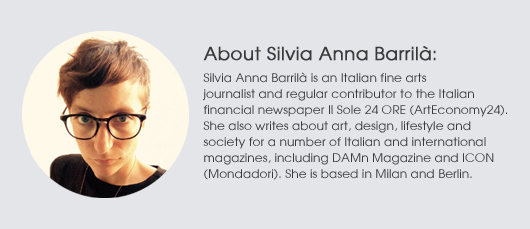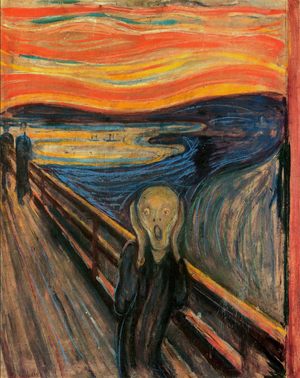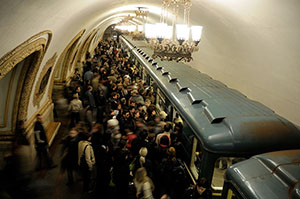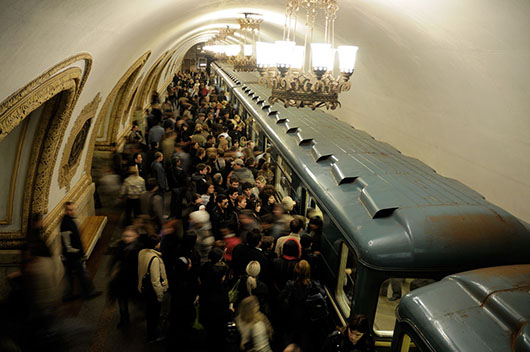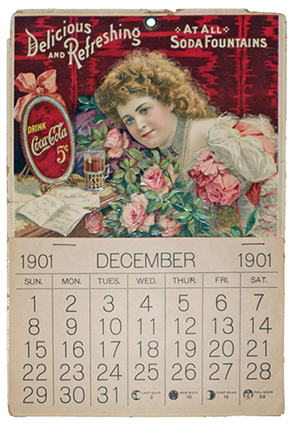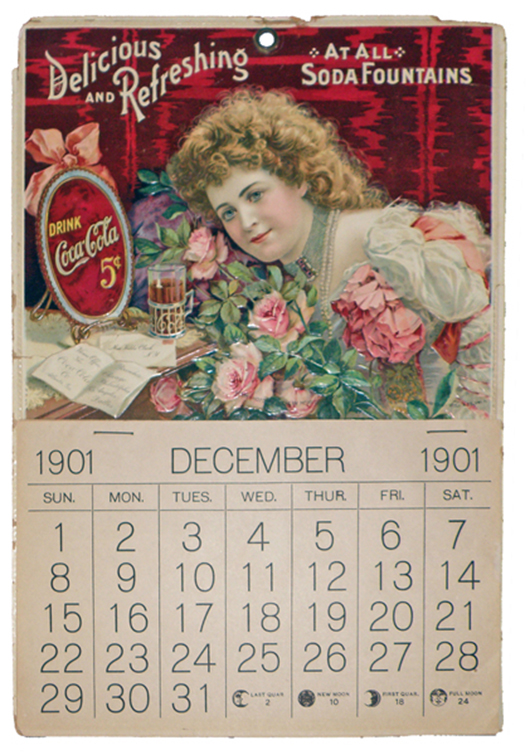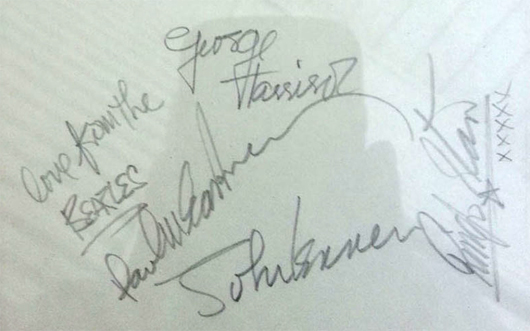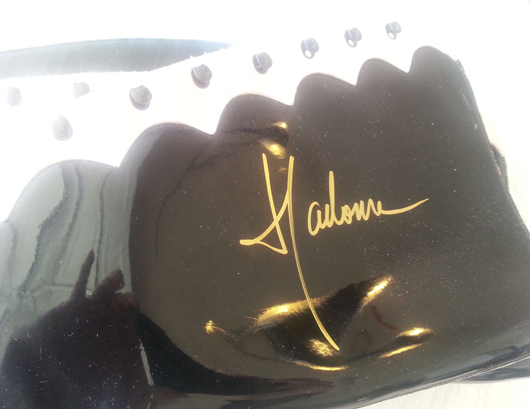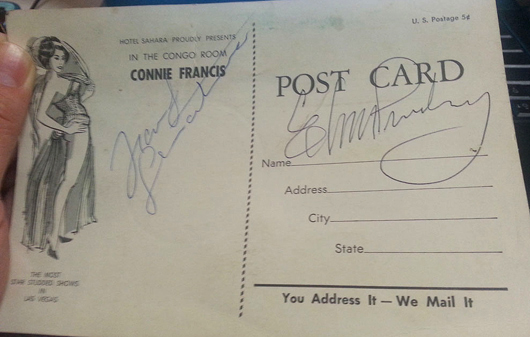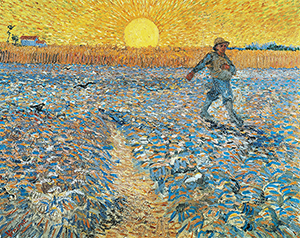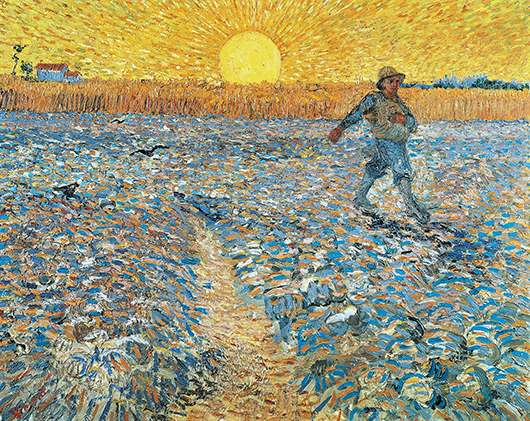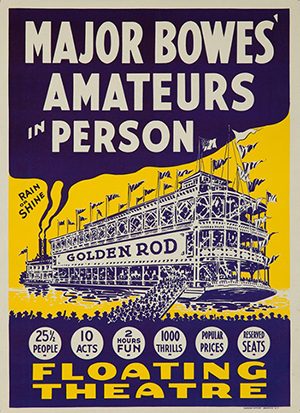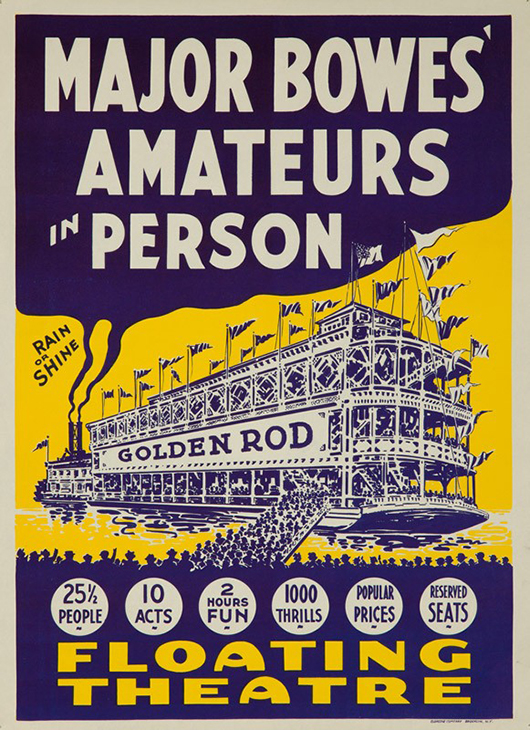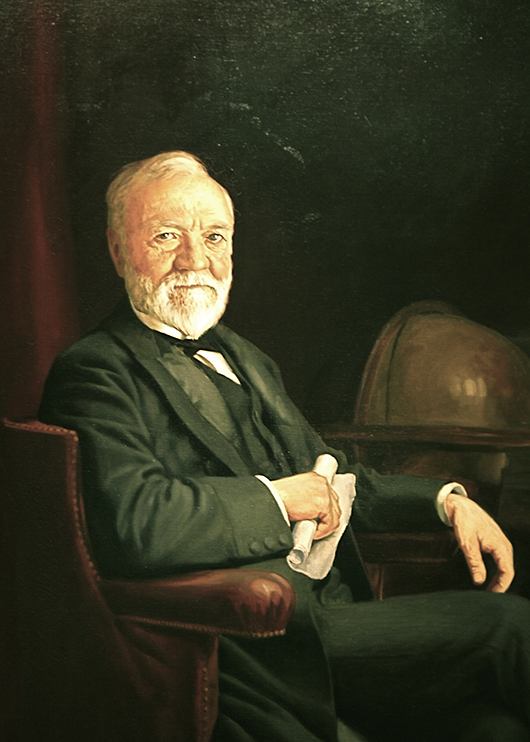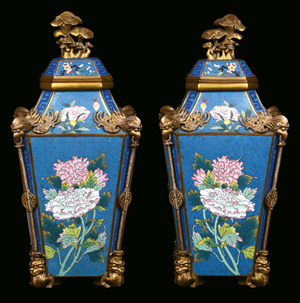
Elegante coppia di vasi cloisonné con ricchi decori in bronzo dorato, Cina, Dinastia Qing, Periodo Jiaqing (1796-1820) a decoro floreale, h cm 43,5. Courtesy Cambi, Genova.
C’è attesa per l’asta di arte orientale da Cambia a Genova il 22-23 maggio. Dopo il successo delle ultime aste del dipartimento, per la prima volta Cambi ha portato i lotti che saranno offerti all’asta in un tour espositivo a Londra. Questo perché il 99% dei clienti della casa d’aste che hanno portato record milionari sono stranieri provenienti da Cina, Taiwan, USA, e altri paesi. “La preview a Londra ha avuto un grande successo”, spiega lo specialista Dario Mottola al telefono da Londra, “con moltissimi visitatori e offerte”. In realtà Mottola spiega che il successo oggi non dipende tanto dal luogo in cui si trova la casa d’asta, ma dalla qualità dell’offerta e dalla preparazione del dipartimento. Basti pensare a Nagel a Stoccarda, che è una delle case leader nel settore cinese, pur essendo in Germania, grazie alla presenza del brillante esperto Michael Trautmann.
Mottola, dal canto suo, annovera 35 anni di esperienza ed è ben introdotto a livello internazionale. Da quando ha preso in mano il dipartimento di arte orientale da Cambi a Genova, la crescita è stata esponenziale. L’ultima asta a dicembre dell’anno scorso ha totalizzato un risultato record di 3,2 milioni di euro, il totale più alto mai realizzato per l’arte orientale in Italia. Ben l’80% dei compratori erano orientali. In quell’occasione, una campana rara in giada bianca Quianlong partita da una stima di 80mila euro è passata di mano per 700mila euro (diritti inclusi) segnando il nuovo record per un oggetto di arte orientale venduto in Italia. Il record precedente era stato battuto sempre da Cambi all’asta precedente di giugno ed ammontava a 600mila euro per una figura di Begtse in bronzo dorato del XVIII secolo partita da una stima di 20mila-25mila euro. Il totale dell’asta di giugno era stato di 1,5 milioni di euro.
Alla prossima asta del 22-23 maggio i lotti in offerta saranno oltre 500, provenienti da collezioni private sia italiane che internazionali. “Anche se sembrano tanti lotti, l’asta è molto selettiva, abbiamo scartato migliaia di lotti”, spiega Mottola. Questo perché la produzione cinese è gigantesca. Si pensi che alla fine del 600 in Cina c’erano già 1.500 fornaci per la produzione della porcellana, a metà 700 ce ne erano 20mila, alla fine del 700 ce ne erano 40mila, e nell’800 non si contano. A metà 700 in Germania ce ne erano quattro o cinque che richiedevano costi molto elevati. Si importava dalla Cina perché i prezzi di produzione erano molto inferiori. Oggi, invece, i cinesi si stanno ricomprando la loro storia e il loro patrimonio di allora. L’attuale governo, che è più democratico del precedente, permette anche una maggiore circolazione di beni e capitali per cui c’è stato un incremento alle ultime aste di arte orientale di Londra, nonostante la qualità degli oggetti non fosse elevatissima come qualche anno fa. “In generale il mercato insegue la qualità. Se vogliamo individuare una preferenza si può dire il periodo Qing, che va dalla fine del 600 all’ultimo imperatore, quindi inizio 900”.
Da Cambi il 22-23 maggio saranno in vendita alcuni lotti eccezionali. “Non bisogna farsi sviare dalle stime”, spiega Mottola. “Spesso sono basse perché il compratore cinese così si fa invogliare a comprare, poi si imbarca in lotte di offerte e arriva a prezzi incredibili perché non vuole rinunciare”.
Tra i lotti più importanti ci sono: una testa in marmo di Luohan Buddista della Dinastia Liao (raffigurata sulla copertina del catalogo, lotto 426), molto rara per il tipo di tipo di pietra utilizzata; un paravento in legno e porcellana di fine 700 (lotto 475); una placca di porcellana e giada bianca imperiale che rappresenta delle persone in un paesaggio (lotto 130); una nave in giada del 700, rara per le misure straordinarie (lotto 119); poi una grande collezione di coralli, eccezionale sia per il numero che per la qualità; una coppia di vasi cloisonné, di cui British Museum c’è un esemplare uguale (mentre qui è una coppia, lotto 288); poi una grande scultura di Buddha (lotto 331); una rara scultura in bronzo parzialmente dorato ad intarsi in oro raffigurante Tsong-Khapa, un filosofo religioso tibetano vissuto tra il XIV e XV secolo così importante nella storia del buddhismo da essere accostata all’immagine dell’imperatore Qianlong in un dipinto nel Palazzo Imperiale (lotto 351); un vassoio imperiale in legno zitan e madreperla (lotto 395); un tessuto in seta di manifattura imperiale riccamente decorato con motivi floreali (lotto 433); e un vaso in giadeite verde smeraldo (lotto 134) molto richiesto sul mercato in questo momento.
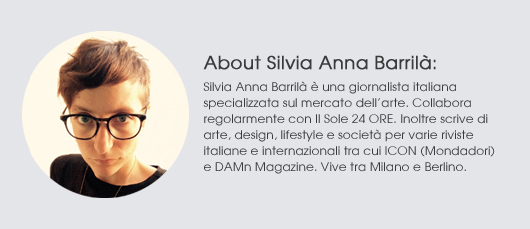
ADDITIONAL IMAGES OF NOTE
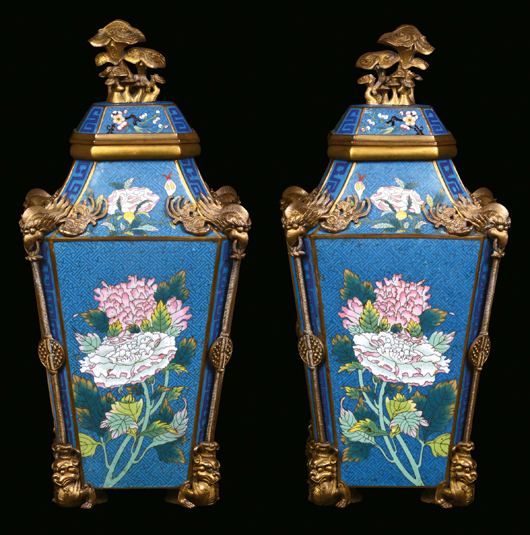
Elegante coppia di vasi cloisonné con ricchi decori in bronzo dorato, Cina, Dinastia Qing, Periodo Jiaqing (1796-1820) a decoro floreale, h cm 43,5. Courtesy Cambi, Genova. 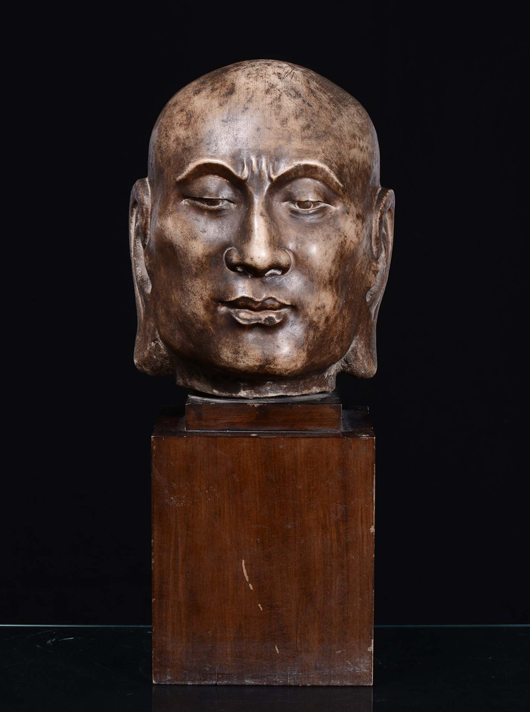
Straordinaria e rara testa in marmo di Luohan Buddista, h cm 31. Courtesy Cambi, Genova. 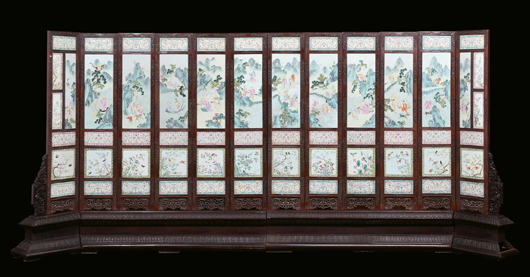
Importante paravento a dodici ante in legno di Homu e sessantaquattro placche in porcellana policroma, Cina, Dinastia Qing, Epoca Jiaqing (1796-1820), cm 385X53X172. Courtesy Cambi, Genova. 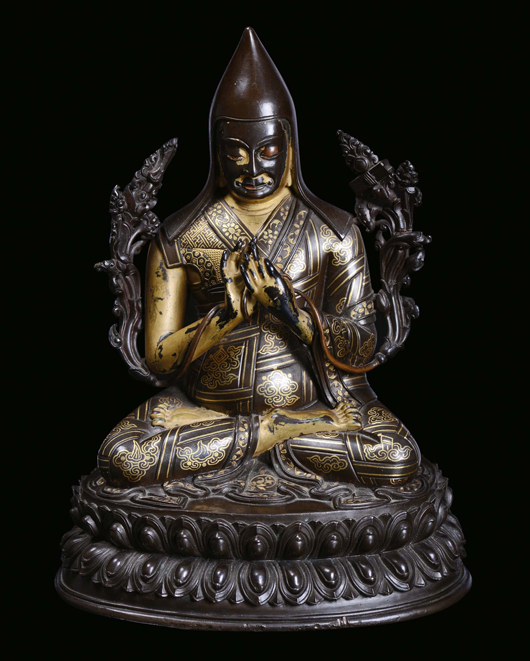
Rara e fine scultura in bronzo parzialmente dorato ad intarsi in oro raffigurante Tsong-Khapa, Dinastia Qing, Periodo Qianlong (1736-1795). Courtesy Cambi, Genova. 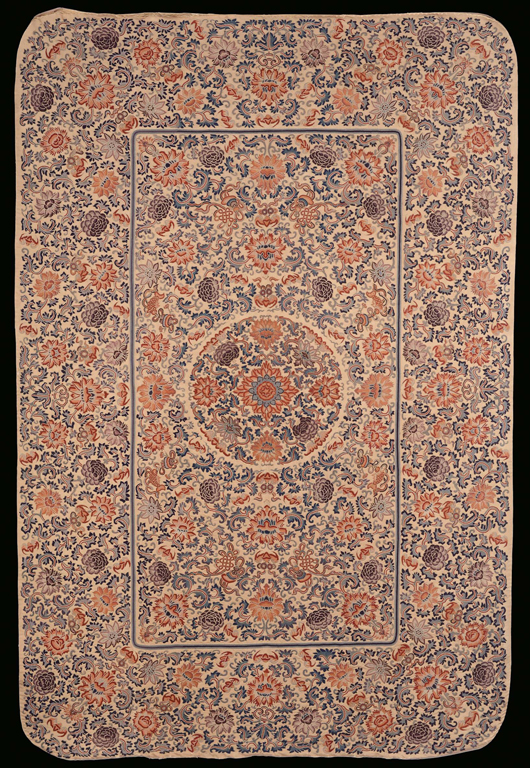
Raro ricamo in seta di manifattura imperiale riccamente decorato con motivi floreali, Cina, Dinastia Qing, Epoca Qianlong ( 1736-1795) cm 166×110. Courtesy Cambi, Genova. 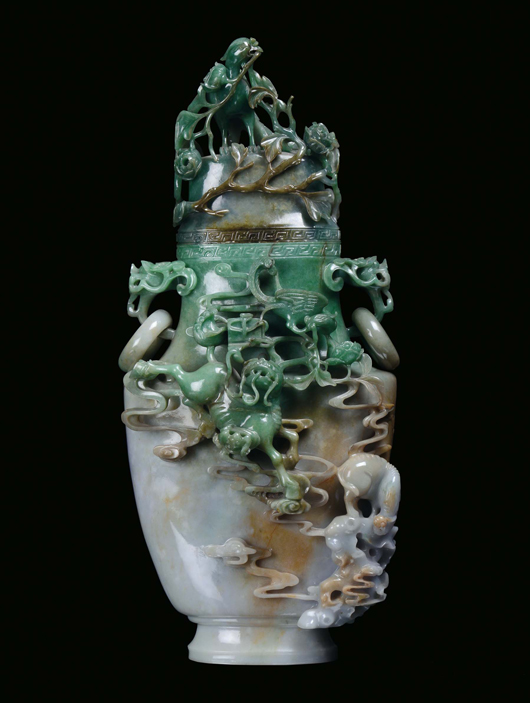
Grande ed importante vaso in giadeite color smeraldo e lavanda scolpito con figure zoomorfe in superficie, Cina, Dinastia Qing, fine XIX secolo, h cm 48,5. Courtesy Cambi, Genova.


